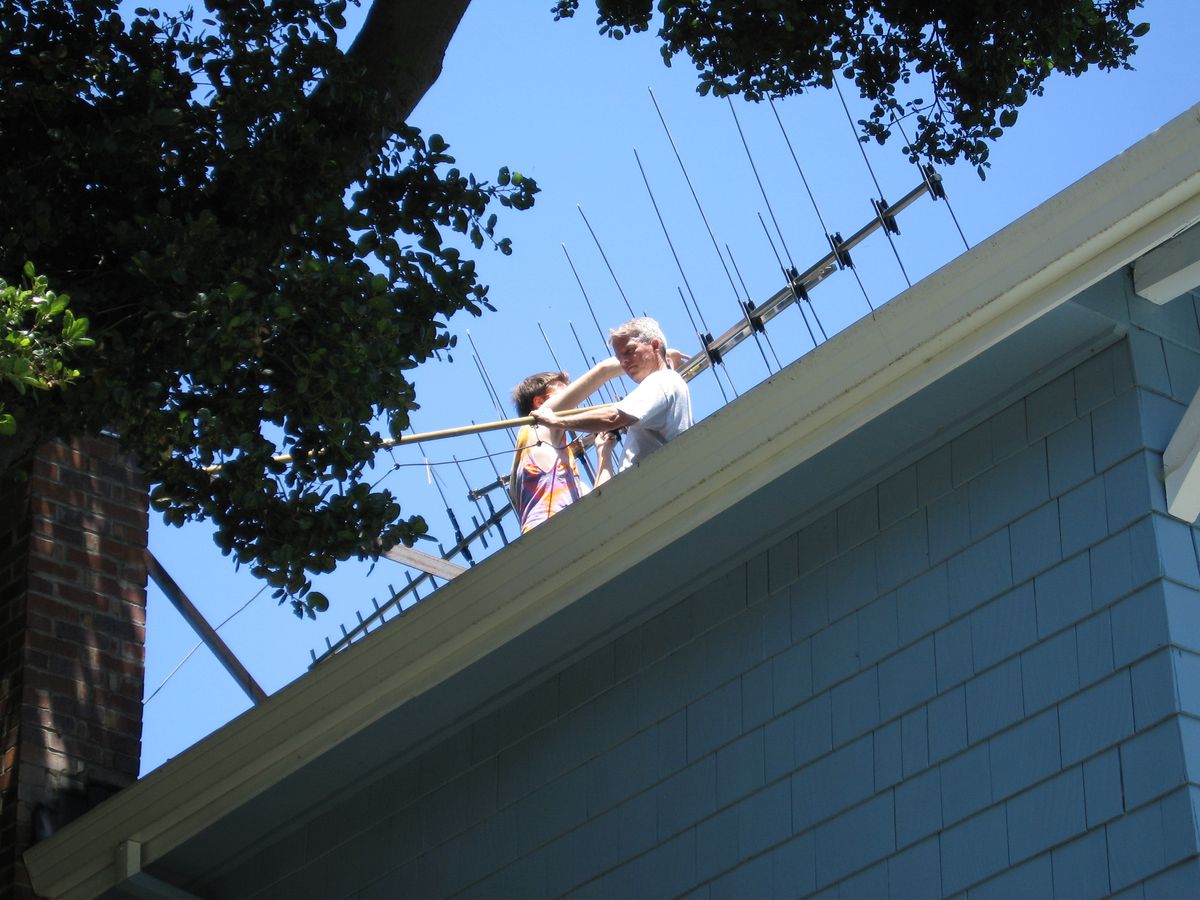This time last year, in anticipation of what was then going to be a 17 February 2009 analog television shutdown, I installed two converter boxes, expecting that would take care of my household’s digital transition. I turned them on, scanned for channels, and got—absolutely nothing.
Fortunately, as a Spectrum editor, I’ve got all sorts of television experts in my address book. I called a few, and they quickly diagnosed my problem--the antenna on my roof was VHF-only, whereas the vast majority of digital TV stations are broadcast on UHF frequencies (yes, I did feel like an idiot). I sent my husband up onto the steep roof of our two-story house (be careful, honey) to replace the ancient VHF antenna with a new UHF antenna. I turned on the TV, scanned for channels, and got lots of foreign language stations, a bunch of kid channels (to my 10- year-old’s delight), but little or no reception of the primary television networks, broadcasting from San Francisco’s Sutro Tower.
I called my experts again and discovered that there are likely contributing to my horrendous reception—too many splitters in the cables that run from my rooftop antenna through my house; trees, buildings, and hills wreaking havoc with the signal; and the fact that the digital transmitters are broadcasting from a temporary, suboptimal position and at reduced power until sometime after the transition are the most likely subjects.
I’m not going to rewire the house—the cabling was dropped into the walls during a remodel many years ago. I can’t do much about the geography, or speed up the renovation of Sutro Tower. I was discouraged, to say the least. But then the FCC postponed analog shutdown until 12 June; so I unplugged the converter boxes and went back to watching analog.
But once again, analog shutdown is imminent. And I refuse to give up and call the cable guys.
Using the information in Spectrum’s February article, “Antennas for the New Airwaves”, and two websites—antennapoint.com and antennaweb.org, I concluded that I needed the biggest, most powerful, VHF and UHF combination antenna I could find and afford. VHF and UHF because, it turns out that in the Bay Area, ABC is going to continue to broadcast on a VHF channel. Big, because, although I’m less than 50 km from the transmitters and these giant antennas are really designed for reception about 100 km or more away, it seemed like I needed all the signal I could get.
On Sunday, my husband and my 17-year-old son went up on the roof (this monster was too big for one person to handle), me on the ground, biting my nails and yelling at my son to stay away from the edge of the roof. With the antenna solidly strapped to the chimney and them safely back on the ground, I went inside to scan for channels.
We lost the kid channel, but picked up a sports channel; my 10-year-old figures that’s a fair trade. We are now getting two networks—NBC and, most of the time, ABC. We are not getting CBS, the independent KRON (which I watch frequently for local news), or FOX. The latter could lead to family strife during American Idol season.
But it turns out that this is not the end of the story. We might just get these channels eventually without installing yet another antenna. Because the digital transition is not a one-day thing.
In the San Francisco Bay area, six stations went ahead and ended analog broadcasting on 17 February, the original shutdown date.
One June 12, most of the remaining stations will shutdown analog broadcasting sometime between 6 pm and midnight; a few will do it earlier that day, three will keep it going as what is called a Nightlight service, that is, a channel available to provide emergency information to folks who didn’t make the transition.
Sometime in the next day or so, ten stations will change the frequencies on which they transmit their digital signals, so anyone trying to watch digital TV will have to keep rescanning for new channels, and may find that they are receiving a different set of channels than they were just moments ago (I’m hoping for a bigger set). One station will actually move its transmitter from one town to another.
Then, sometime in the fall, 11 channels broadcasting out of San Francisco, including most of the networks, will get new, more powerful, and higher antennas. No one knows exactly when this will happen. The good news is that it will likely make my reception a lot better. The bad news is that, while the antenna work is being done, some of the stations will be temporarily broadcasting on even lower power antennas than they are today.
Whew. That’s my transition tale update for now. And I have to look back and laugh when I think about how naïve I was this time last year, when I thought all I needed to do was install a converter box.
Tekla S. Perry is a senior editor at IEEE Spectrum. Based in Palo Alto, Calif., she's been covering the people, companies, and technology that make Silicon Valley a special place for more than 40 years. An IEEE member, she holds a bachelor's degree in journalism from Michigan State University.





